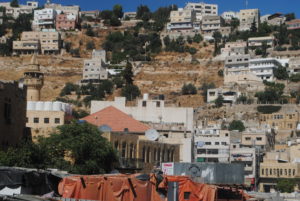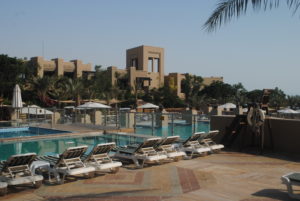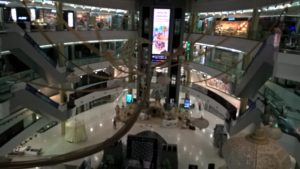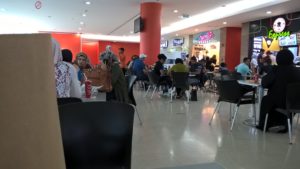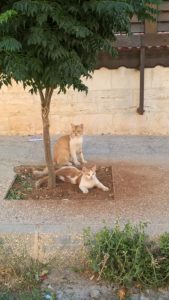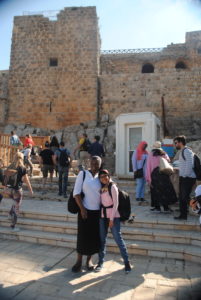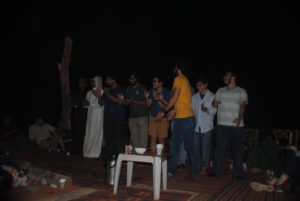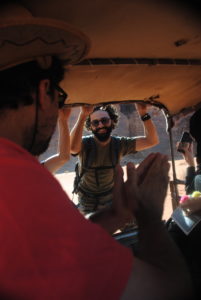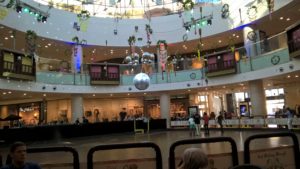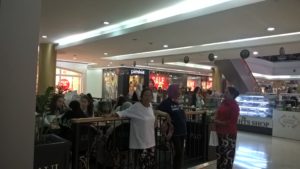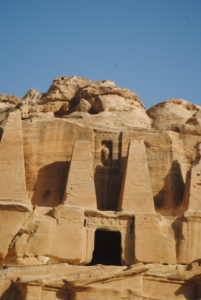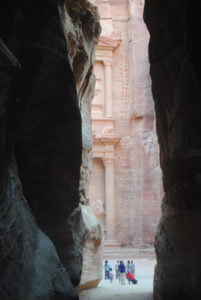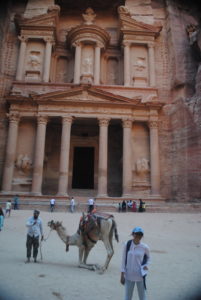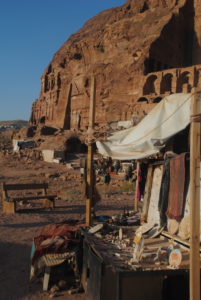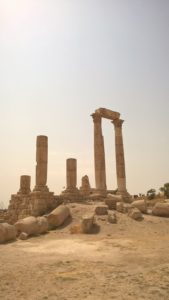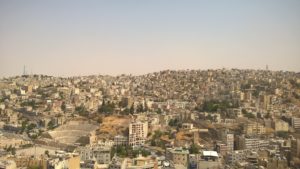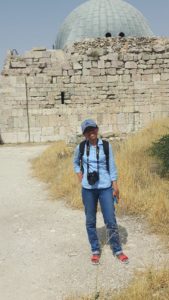Every day when I walk to Qasid in the morning, two cats follow along with me for most of the way, asking me for pets and attention. These cats have become my good friends here in Jordan and I will miss them when I leave in a few weeks. There are many such cats living in the nooks of Amman, and they are generally a tough lot that are used to surviving independently. Jordanians may leave food and water out for them, but cats in this country hardly enjoy the privileged status that they enjoy in a place like Turkey. The cats, much like the citizens of Amman, have to fend for themselves.
The cat friends I have made here have given me cause to think about the nature of Jordanian society. For it is not uncommon for one to see homeless and impoverished individuals sitting quietly on streets and on bridges, sometimes attempting to sell a couple of vegetables or junk jewelry in little stalls. Cab drivers here will often attempt to charge foreigners double or triple fares and houses can fall down due to being built with inferior cement. Like the cats living amongst them, it often feels like Jordanians from a lower socioeconomic status are competing for scraps.
Every society in the world has to deal with the challenge of poverty. I have seen homeless men shouting at pedestrians in Harvard Square and know what it means to struggle with money in both the West and Indonesia. But in Amman I found that it is different, for here the gaps between rich and poor is imprinted in the very colours of the city.
For the majority of Amman, where the cats and the cab drivers live, the primary colour is brown. The sands and dust of the desert have taken hold, and most plants that grow are either weeds or twiggy bushes and trees. The stores are crowded, the clothes simple and the buildings are for the most part simple grey concrete blocks.
But there is a slim quarter of Amman that is different. The primary colour is green, with well-groomed parks and plants marking the places between western chains like Zara and the Body Shop, with malls that could easily be mistaken for any of the malls in mid-western America. And it is in here, in these strange slices of North America, that one can find the King and the rest of the Jordanian elite.
American society is deeply flawed, but there is a powerful national myth in the country that one can ‘pull oneself up by one’s bootstraps’ and go ‘from rags to riches’ somehow. Even if this myth does not often stand up to scrutiny, the driving force behind it is meant to motivate citizens to strive for their own betterment. And I wonder, here in Jordan, where that same motivation can come from? When the city itself is painted in such colours as to vividly display the King living in an entirely different sphere of existence to the common man. And unless one is a child of King Abdullah, those are heights that the citizens cannot even conceivably reach and, indeed, it is impossible for a citizen to even so much as enter the green space the family has cultivated without direct permission from the government.
The motivating power of a national mythology can be invigorating. Young people from every walk of life need to have something to aspire towards. Without that, it becomes more and more difficult for a society to improve itself. With a very deep gap of socio-economic conditions, I cannot help but feel that the ordinary Jordanians are essentially forced to live like the cats that accompany me to school. No matter how much they strive in school or in business or in their chosen field, one cannot rise above a select few who are able to take refuge from the reality in the blissful ignorance of the opulent malls of Amman.
It is this thought in particular that makes me grateful that Suharto (the notorious ex-President of Indonesia who was deposed from his seat by the people in 1998) resigned and my home country of Indonesia is now free of its ‘king’, and that I need to fear no such ceiling as I continue to forge my own life and destiny in North America.
